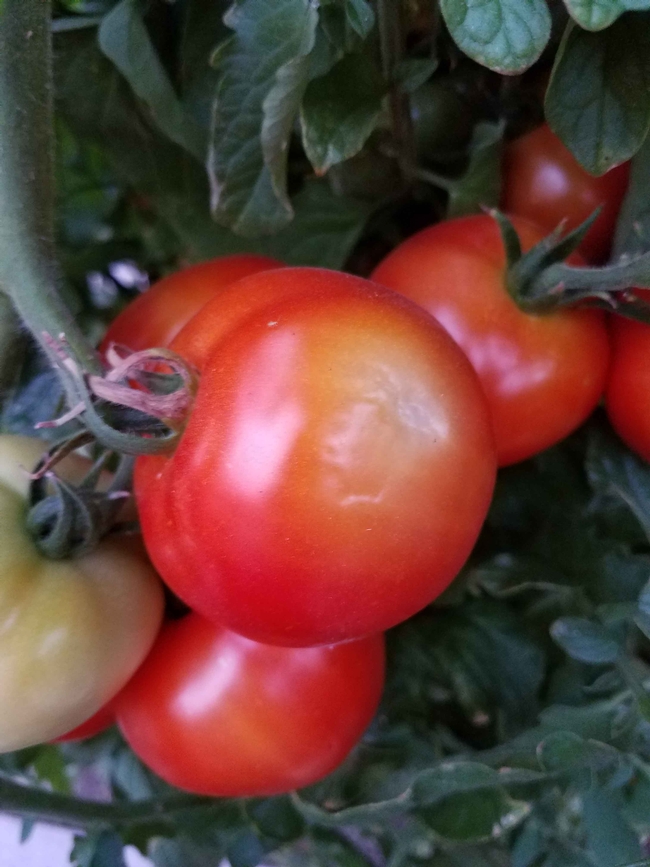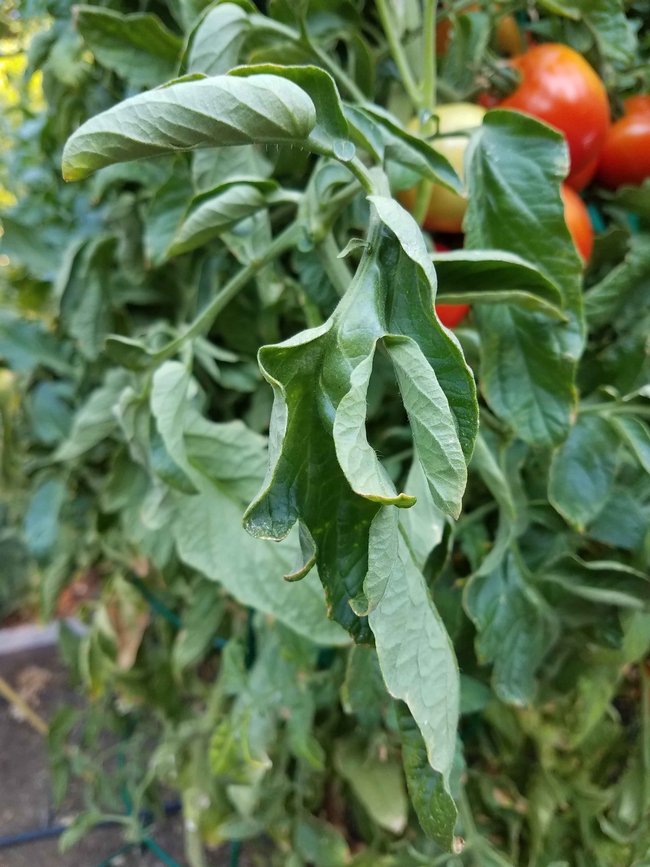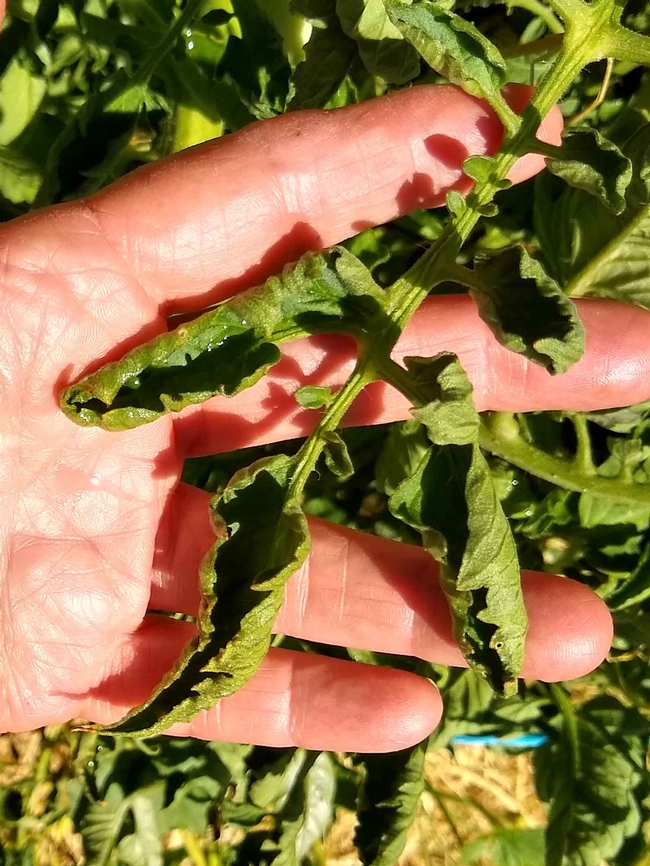It's hot. Tomatoes like heat, right? Actually, tomatoes like warm weather, between 65 and 85 degrees. When temperatures soar past 95, tomatoes stop growing. In that kind of heat, their flowers fail to pollinate and instead they dry up and drop off, putting a pause on the production of new fruit. Tomatoes that have begun to color will halt at orange and fail to turn red.

If your tomato plant has good green leaf color, is flowering and has fruit developing, but its leaves are curling up, you are experiencing a common summer problem for tomatoes in our area. The culprit again is most likely heat. Tomato leaves transpire water from the undersides of their leaves. When a tomato plant can't take in as much water as it is losing, its leaves will curl up. This occurs when the soil is too dry, the temperature is too hot, or it's too windy. Check soil moisture by poking a finger an inch into the soil. If it's dry, it's time to water. Leaf curl is the tomato's way of reducing leaf surface area to reduce water loss. Curling up will not affect fruit production or the health of the plant.

There is one further thing to rule out before you rest in the tranquility that upward leaf curl requires no action on the gardener's part: pests. Check a few leaves to be sure the curl isn't harboring an insect or caterpillar cocoon. No caterpillar, no problem. Your tomatoes are fine in their self-protective upward curl.
A two- to three-inch layer of mulch around tomatoes will help the soil retain moisture and stay cooler. Straw, wood chips, chopped leaves, and grass clippings are all fine mulches for this purpose. Mulch also helps keep moisture around tomato plants more even; this can keep the fruit from cracking and help to prevent blossom drop.
Ever wondered how to encourage sweeter tomatoes? Here temperature and sun are your friends, to a point. Ninety degrees and lots of sun will give you a sweeter tomato. At 100 degrees, fruits develop color on the outside, but stay green on the inside: not tasty. So when temperatures soar, pick tomatoes that have begun to color and allow them to ripen indoors. Remember: never refrigerate a tomato.

For more information see ANR Publication on Growing Tomatoes in the Home Garden.
The UC Master Gardeners of Butte County are part of the University of California Cooperative Extension (UCCE) system. To learn more about us and our upcoming events, and for help with gardening in our area, visit our website. If you have a gardening question or problem, email the Hotline at mgbutte@ucanr.edu (preferred) or call (530) 538-7201.